The dinosaur menu suggests what the ecosystems of the Holy Cross Mountains looked like 200 million years ago
A research project carried out at our Institute, which aimed to reconstruct the Jurassic ecosystems of southern Poland (more specifically, the Holy Cross Mountains) and their dynamics resulting from topographic and climatic changes (see the project description), has just come to an end. The research involved palaeobotanists and palynologists (representing our Institute, the Institute of Geological Sciences PAS and the Jagiellonian University), geologists specializing in sedimentology and stratigraphy (from the Polish Geological Institute – NRI, Warsaw) and vertebrate palaeontologists (from Uppsala University).
The analysis of plant fossils and preserved spores and pollen grains showed that about 200 million years ago the area of today's Holy Cross Mountains was covered with forests utterly different from the present ones. The vegetation, in addition to conifers, included numerous ferns (also arborescent ferns), ginkgophytes (only one species is known today – Ginkgo biloba), cycads and extinct groups of plants, such as seed ferns and bennettitaleans. Valuable information on Jurassic plant communities was provided by studies of coprolites (i.e., fossilized faeces containing undigested plant remains) left by giant herbivore sauropods and, feeding on herbivores, large predators. Thanks to these studies, a few new taxa could be added to the list of the already known flora of Jurassic sites in the Holy Cross Mountains, the macroremains of which were not found in the sediments. One of the most interesting finds was a leaf (needle) of a plant related to today's pine (currently the oldest record of this type). From the sauropod's diet, we learn that these animals eagerly foraged in the treetops and chose plants with large, soft and nutritious leaves. Some travelled long distances while foraging. Studying the Earth's past, while not easy, is fascinating because it gives an insight into the mechanisms of nature acting over large time scales, thus giving a better understanding of recent, or possibly, future processes.
More information in the article:
Barbacka M., Górecki A., Pacyna G., Pieńkowski G., Phillippe M., Bóka K., Ziaja J., Jarzynka A., Qvarnström M., Niedźwiedzki G. 2022. Early Jurassic coprolites: insights into palaeobotany and the feeding behaviour of dinosaurs. Papers in Palaeontology 8: e1425. DOI
See also the popular science article (only in Polish):
Barbacka M., Pacyna G., Ziaja J., Niedźwiedzki G. 2021. Co napędzało dinozaury? Academia 65: 98–102. DOI
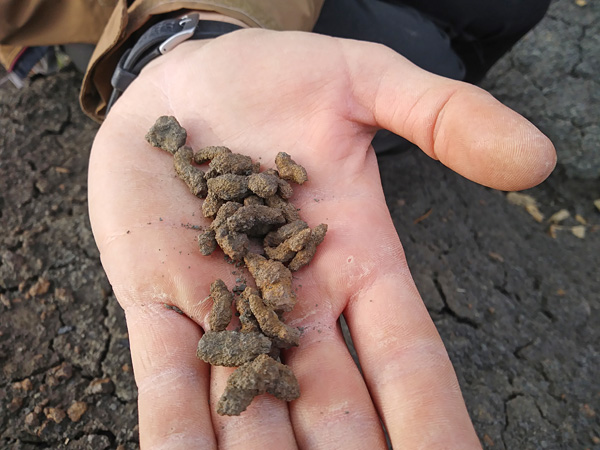
Fish coprolites.
Photo: Maria Barbacka.
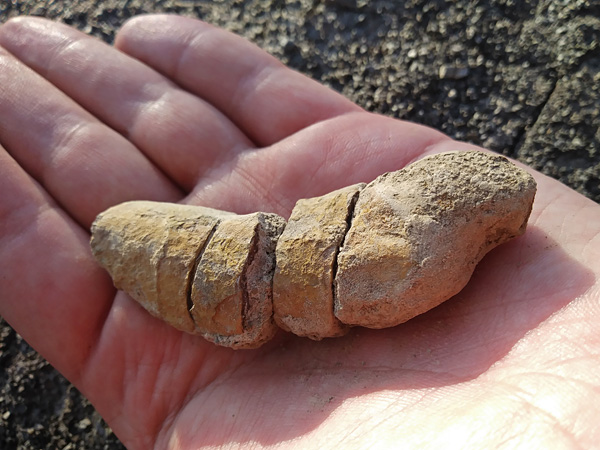
A coprolite of a small predatory dinosaur.
Photo: Maria Barbacka.
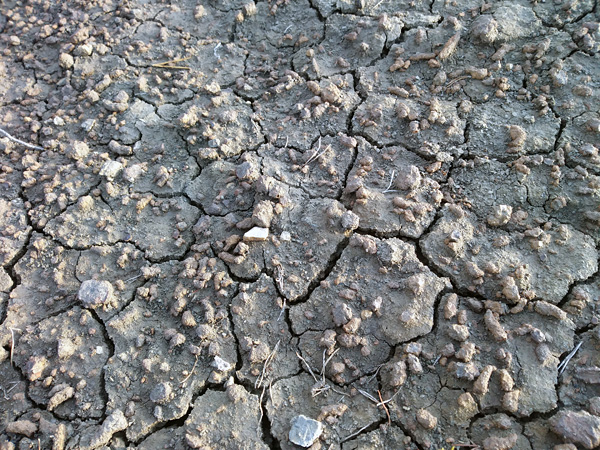
Fish coprolites washed out to the soil surface.
Photo: Maria Barbacka.
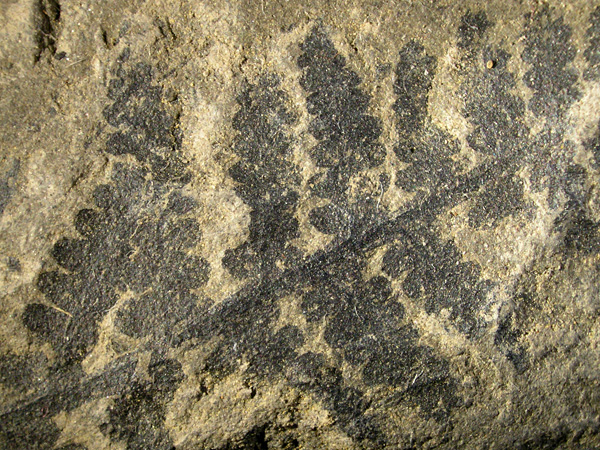
One of the species of fossil ferns.
Photo: Maria Barbacka.
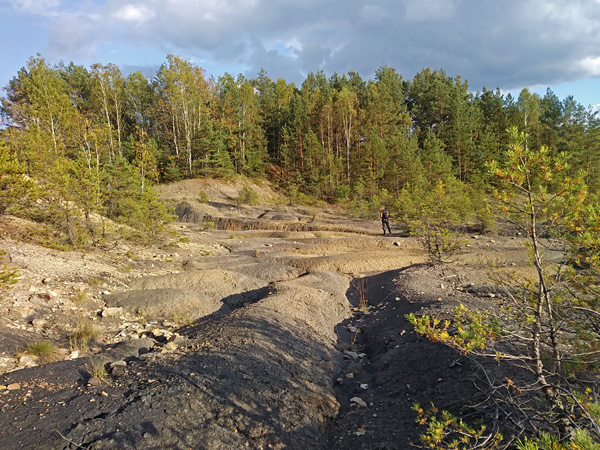
A site of fossil plants and coprolites in Sołtyków, the Holy Cross Mountains.
Photo: Maria Barbacka.





